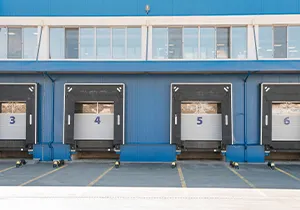In the world of logistics, efficiency is key. Finding ways to streamline operations and reduce costs can give your business a competitive edge. One method that has gained popularity in recent years is cross-docking. In this article, we’ll dive into the concept of cross-docking and explore its benefits for your business.
What is Cross-Docking?
The Basics
Cross-docking is a logistics strategy that involves unloading products from inbound vehicles and directly loading them onto outbound vehicles with minimal or no storage time in between. The goal is to move products swiftly through the supply chain, eliminating the need for long-term warehousing and reducing handling and storage costs.
How It Works
The process of cross-docking starts with receiving incoming shipments from suppliers. These shipments are sorted based on their destinations and customer orders. Instead of placing the items in a warehouse for storage, they are immediately transferred to outbound transportation, such as trucks or trailers, for delivery to their final destinations.
The Types of Cross-Docking
There are two primary types of cross-docking:
Hub and Spoke: In this model, goods from various suppliers are consolidated at a central hub or distribution center and then sorted and loaded onto outbound vehicles for delivery to multiple destinations.
Flow-Through: With flow-through cross-docking, goods move directly from inbound transportation to outbound transportation without the need for intermediate storage or sorting. This approach is often used for high-demand products with fast turnaround times.
The Benefits of Cross-Docking
Improved Efficiency and Reduced Costs
One of the key benefits of cross-docking is improved efficiency. By bypassing the need for long-term storage and minimizing handling, products can be moved quickly through the supply chain, reducing lead times and improving order fulfillment speed. This efficiency translates into cost savings for your business by reducing warehousing expenses, inventory carrying costs, and labor requirements.
Optimized Inventory Management
Cross-docking enables a more efficient inventory management system. Instead of holding excess inventory in a warehouse, products are immediately sent out for delivery, reducing the risk of overstocking or obsolete inventory. This real-time inventory management allows you to maintain better control over stock levels and respond quickly to changes in demand.
Enhanced Product Quality and Freshness
For businesses dealing with perishable goods or products with a limited shelf life, cross-docking can be a game-changer. By minimizing storage time, you can ensure that products are delivered to customers in a timely manner, maintaining their freshness and quality. This is particularly beneficial for industries such as food and pharmaceuticals.
Greater Supply Chain Visibility
Cross-docking provides enhanced visibility and traceability throughout the supply chain. With faster product movement and reduced storage, it becomes easier to track the flow of goods from suppliers to customers. This visibility allows for better coordination and planning, resulting in more accurate delivery schedules and improved customer satisfaction.
Implementing Cross-Docking Successfully
Choose the Right Products
Not all products are suitable for cross-docking. Items with consistent demand, predictable order patterns, and minimal special handling requirements are ideal candidates for cross-docking. Conduct a thorough analysis of your product mix to identify the items that will benefit the most from this strategy.
Collaborate with Suppliers
Effective communication and collaboration with suppliers are essential for successful cross-docking. Coordinate with your suppliers to ensure timely deliveries and consistent product quality. Aligning your expectations and requirements with your suppliers will help ensure a smooth cross-docking process.
Invest in Technology
Implementing the right technology is crucial for optimizing cross-docking operations. Warehouse management systems (WMS) and transportation management systems (TMS) can provide real-time visibility into inventory, automate sorting and routing, and enable efficient communication with suppliers and carriers. Embracing technology will help streamline your cross-docking processes and maximize its benefits.
Collaborate with a Reliable 3PL Partner
Partnering with a trusted third-party logistics (3PL) provider can greatly facilitate the implementation of cross-docking in your supply chain. A reliable 3PL partner will have the expertise, resources, and infrastructure to seamlessly manage the cross-docking process, ensuring smooth operations and timely deliveries. They can handle the sorting, consolidation, and coordination with carriers, allowing you to focus on your core business.
In Conclusion
Cross-docking is a valuable logistics strategy that offers numerous benefits for businesses aiming to streamline their supply chain operations. By eliminating long-term storage, reducing handling costs, and optimizing inventory management, cross-docking can significantly enhance efficiency, reduce costs, and improve customer satisfaction. Implementing cross-docking successfully requires careful planning, collaboration with suppliers, investment in technology, and potentially partnering with a reliable 3PL provider.
At American Warehouse, Inc., we understand the complexities of supply chain management and offer comprehensive cross-docking services tailored to your business needs. Contact us today to learn how we can optimize your supply chain with our expertise in cross-docking and warehousing solutions.

